The site I visited for my botanical research survey was a 5.4-acre neighborhood park. It was filled with many different species and had several branching paths that slowly meandered down toward the Olentangy River. There was a lot of cool vegetation to see at the site, and it was a pleasure getting to discover things on my own for the first time. Although not as extensive as a full botanical survey, projects like this are crucial to understanding a site, and how to best manage the species there.

Kenny Park via Google Maps
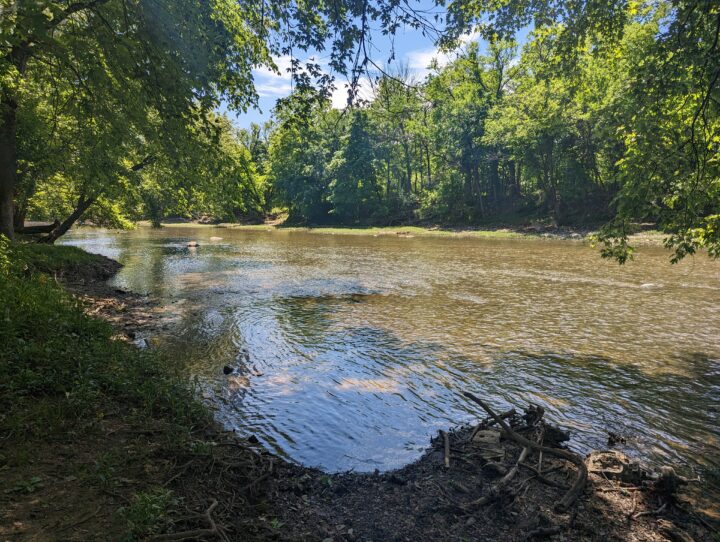
View of the Olentangy River at Kenny Park
The first thing that was important to look out for was poison ivy. Poison Ivy is an easily identifiable plant if you know what you’re looking for! There are several helpful slogans to use when you’re wondering if the thing in front of you could be dangerous to touch. The first is leaves three, let it be. This means if there are three leaflets, you might want to take a step away. The second is aerial roots, use your boots. This means that if a vine looks like a hairy rope, stay away. The third is berries white, run in fright. This is because the fruits that poison ivy produces are little white drupes.
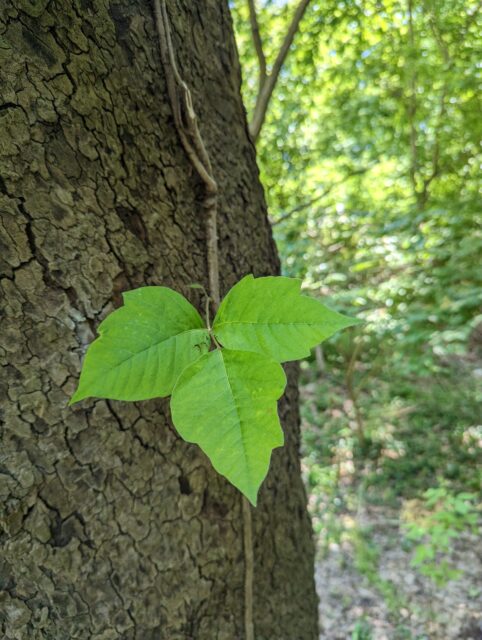
Poison Ivy (Toxicodentron radicans)
As I continued through the site I was on the lookout for flowers and inflorescences. There was a lot to see, and it was a lot of fun discovering what each of the species I was seeing actually were.
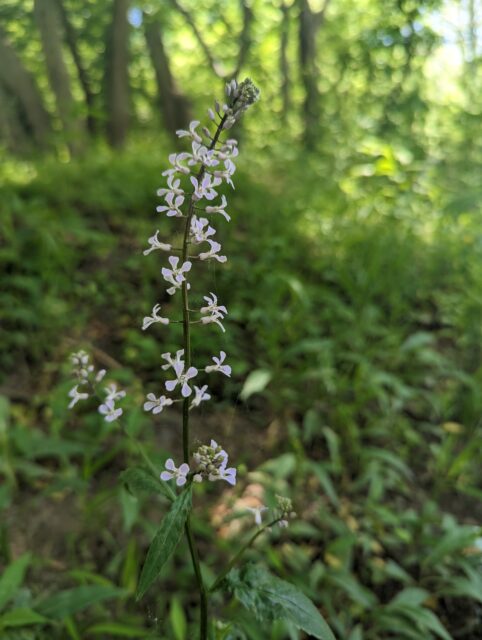
-Common Name:Purple Rocket
-Scientific name: Lodanthus pinnatifidus
Purple Rocket has a calyx of 4 sepals and a corolla of 4 petals, arranged with radial symmetry. The androecium consists of 6 stamens. Purple Rocket is hypogynous with a syncarpous gynoecium type. This flower has a raceme inflorescence type. The fruit of the purple rocket are thin pods up to 1 ½ inches long (minnesotawildflowers,n.d).
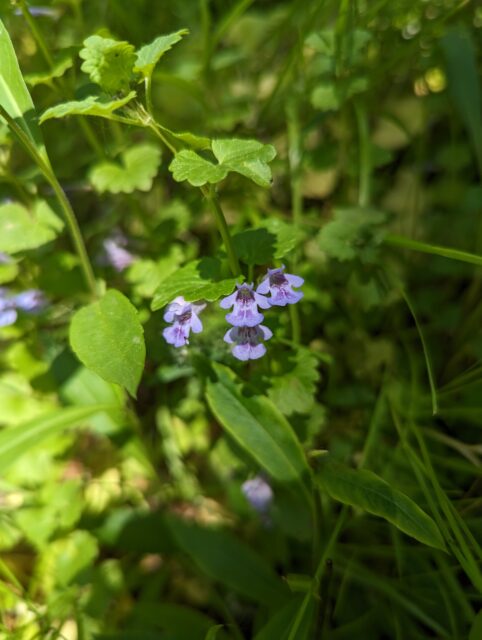
Common Name: Creeping Charlie
Scientific name: Glechoma hederacea
Creeping Charlie has a calyx of 5 sepals and a corolla of 5 zygomorphic petals. The androecium consists of 2 stamens. Spring Avensis is perigynous with a syncarpous gynoecium type. This flower has a raceme inflorescence type. The fruit of the creeping charlie are tiny galls that form along the stem of the plant. This is formed when a wasp lays an egg in the leaf or stem of the plan(michigannatureguy,2016).
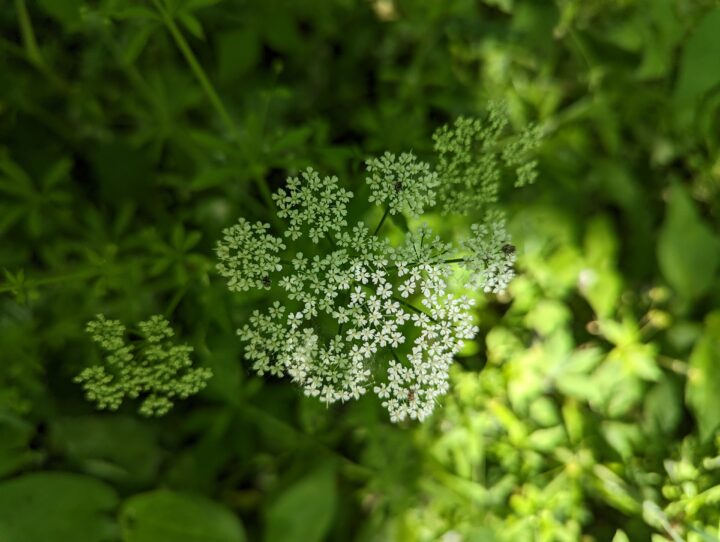
Common Name: Bishop’s Goutweed
Scientific name: Aegopoduium podagraria
Bishop’s Goutweed has a calyx of 5 sepals and a corolla of 5 petals, arranged with radial symmetry. The androecium consists of 5 stamens. Bishop’s Goutweed is epigynous with a syncarpous gynoecium type. This flower has an umbel inflorescence type. Bishop’s Goutweed is in the Apiaceae, which means that the fruit it produces are schizocarps.
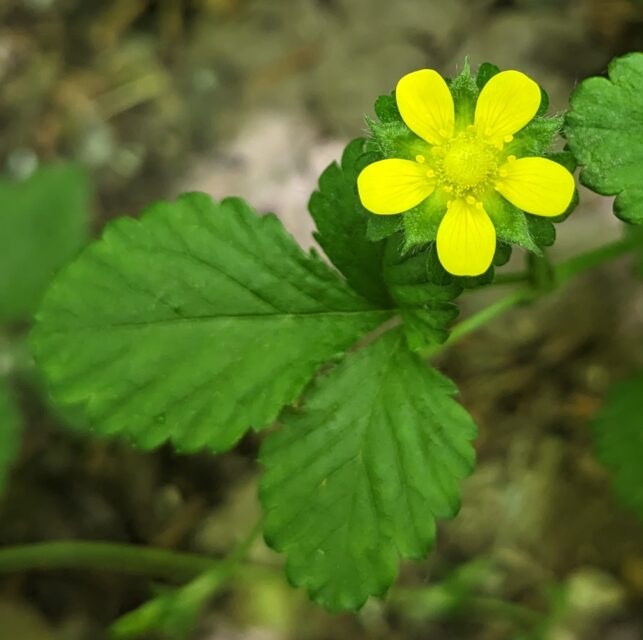
Common Name: Barren strawberry
Scientific name:Duchesnea indica
Barren Strawberry has a calyx of 5 sepals and a corolla of 5 petals, arranged with radial symmetry. The androecium consists of numerous stamens. Barren strawberry is perigynous with an apocarpous gynoecium type. This flower has a solitary inflorescence type. Barren strawberry has fruits that are aggregate accessory fruits.
My second object during my day at Kenny park was to find invasive plants. Some of these plants, unfortunately, had taken over parts of the park, and were very abundant throughout. More information on these invasives can be found at https://www.oipc.info/invasive-plants-of-ohio.html

Common name: Amur Honeysuckle
Scientific name: Lonicera maackii
Amur Honeysuckle originated in China, Russian Far East, Korea, and Japan.
It is found almost everywhere in Ohio, however, it thrives in disturbed sites and roadsides (mda, n.d). Suggested control measures include: Hand removal of seedlings. Repeated cutting in shaded forest habitats, as well as mowing and bush-hogging. Controlled fire could be a tactic as well. Herbicide application has been found to be the most effective control measure.
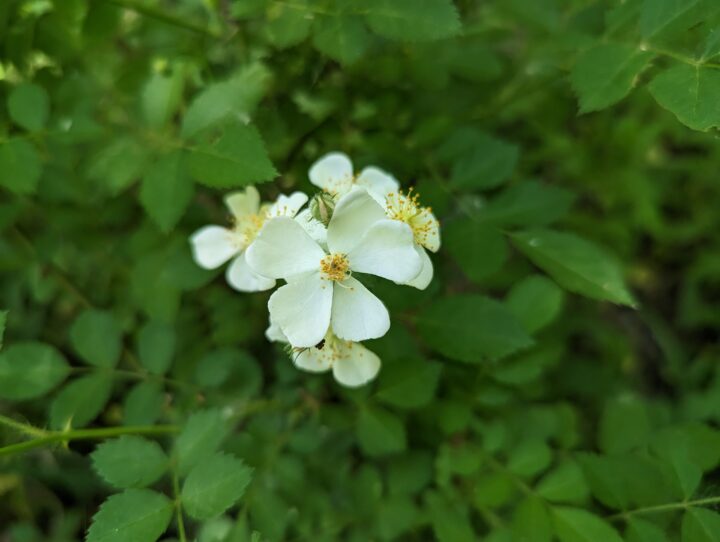
Common name: Multiflora Rose
Scientific name: Rosa multiflora
Multiflora rose originated in Japan, Korea, and eastern China.
It is everywhere in Ohio, but it prefers summy to semi-shaded habitats with well-drained soils. Suggested control measures include Removal using a digging tool, ensuring the removal of the full plant. Systematic herbicide application on cut stems. Another more impractical solution is using the rose rosette virus, which is spread by tiny native mites, or a seed-infesting wasp. This, however, can also impact the other rose species.
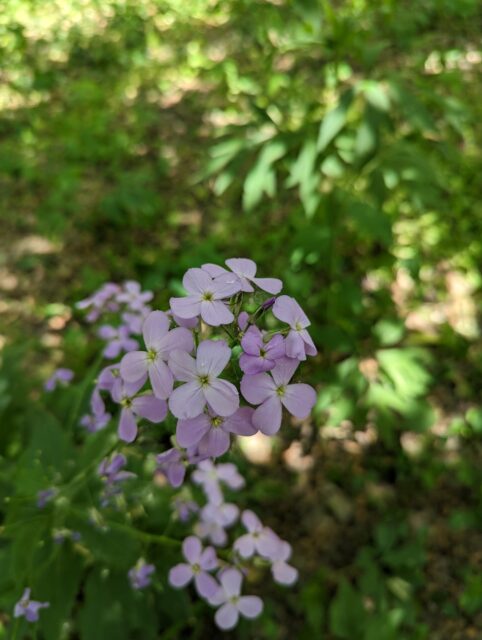
Common name: Dames Rocket
Scientific name: Hesperis matronalis
Dames Rocket originated in Eurasia. It prefers moist woodlands, roadsides, open areas, and disturbed sites. It is reported as invasive in many states.
Suggested control measures include: Hand removal, and removing of the waste by burning or bagging it. Chemical measures such as herbicides are also helpful for control(USDA,2006).
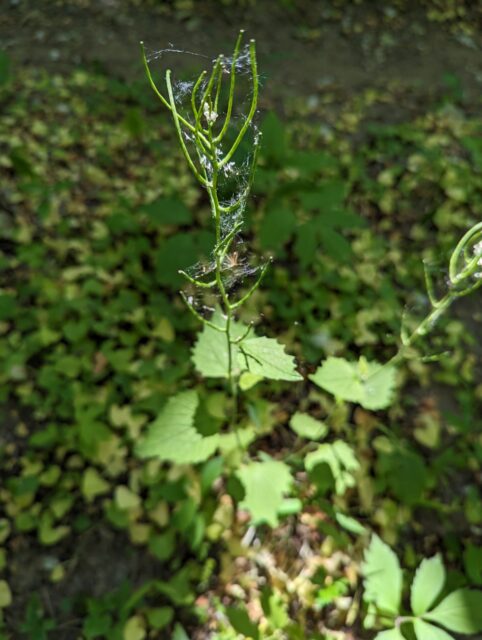
Common name: Garlic Mustard
Scientific name: Alliaria petiolata
Garlic Mustard originated in Europe. It prefers shade in mesic upland and floodplain forests. It also thrives on roadsides, fencerows, and forest edges. Suggested control measures include Hand removal, cutting stems of flowing plants, and prescribed fire. Chemical control can include systemic herbicides on first-year rosettes. When doing this it is important to kill all rosettes in the area, otherwise, the survivors will invade the area.
My third objective was finding and identifying woody plants, using only their fruits. Due to the season, it was a difficult task, but I was able to find some interesting species.
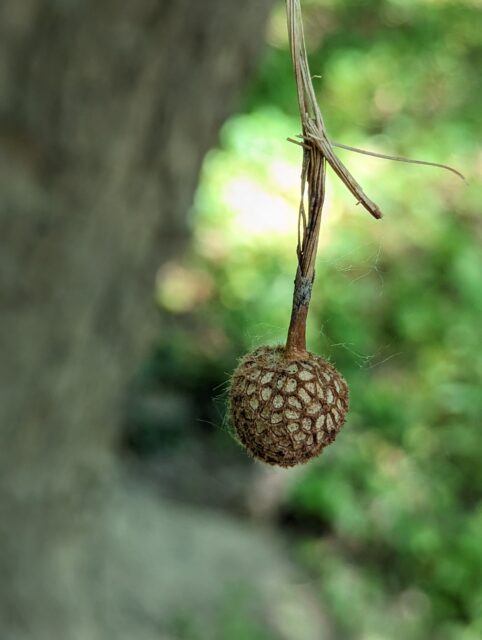
mmon name: American Sycamore
Scientific name:Platanus occidentalis
This fruit is an aggregate of achenes. There are several traits I used to identify it to species. Although this does not look like the typical spiky or bumpy fruit of American Sycamore, the pod I found was the remnants of those aggregates of tiny achenes in a ball-like structure. It also has a very recognizable stem.
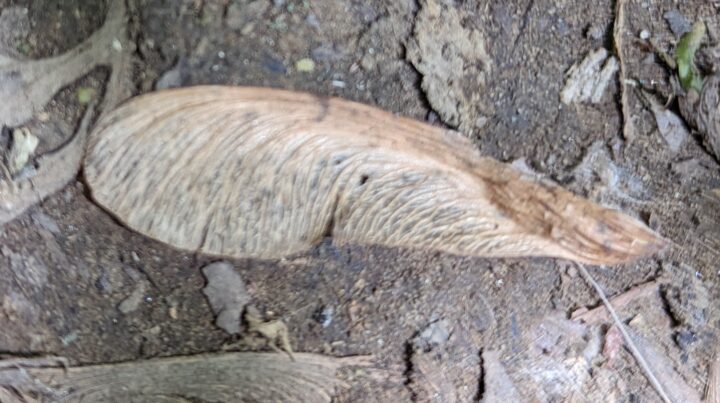
Common name: Silver Maple
Scientific name: Acer saccharinum
This fruit is a samara. There are several traits I used to identify it to species. The fruit I found had a wing at the end, and although it was not paired at the moment, it was in its original state. This lead me to the maple(Acer) family. From there, I saw that the fruit had been released in late spring, and the wing was about 2” long. This description matched the one for sugar maple.
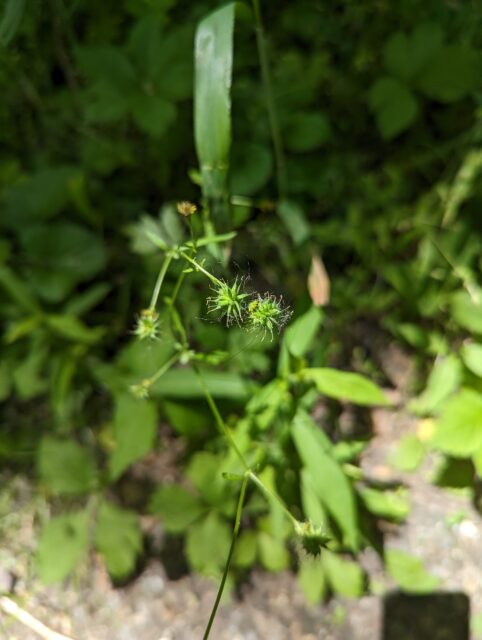
Common name: Spring Avens
Scientific name:Geum vernum
This fruit is an aggregate of achenes. There are several traits I used to identify it to species. The fruit of the Spring Avens are achenes that grow in a cluster on the calyx of the flower. They look like a bunch of green tiny tendrils reaching out in all directions, with bristly tips.

-Common name: Cleavers, aka Stickyweed
-Scientific name: Galium Aparine
This fruit is a schizocarp. There are several traits I used to identify it to species. The fruit of cleavers is a schizocarp, with two capsules that have spines along the edges for seed dispersal. They are tiny and have a green-brown color, sprouting from the whorled leaves of the plant.
My last objective was finding moss and lichen at Kenny Park. I found this task to be the hardest, as I couldn’t find many different species at that location.
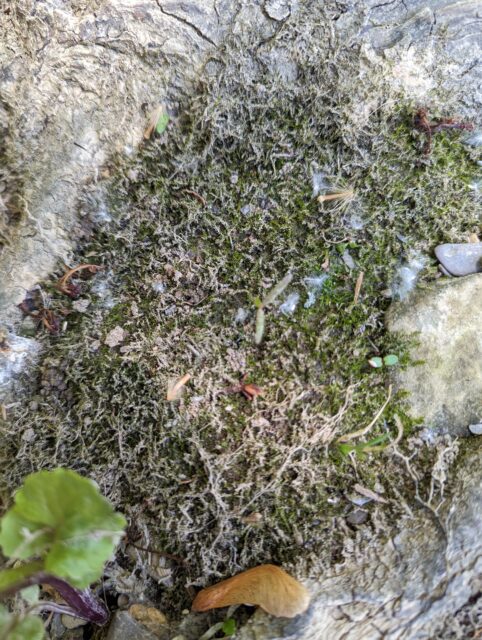
Baby Tooth Moss
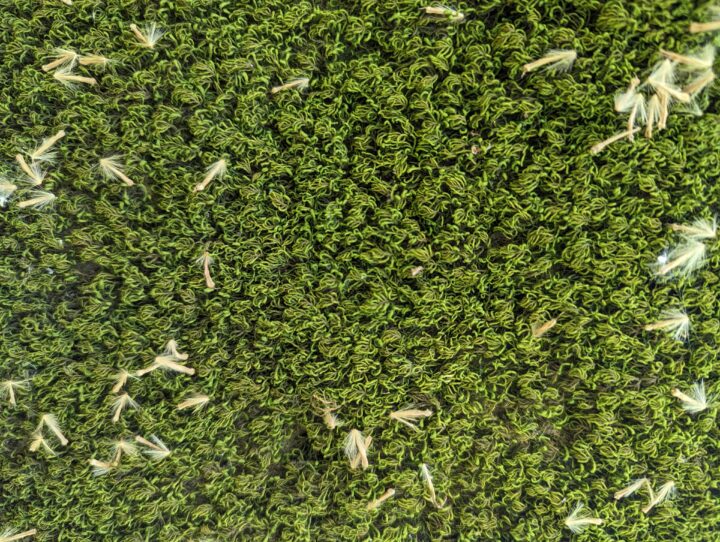
Poodle Moss

Wavy Star moss
